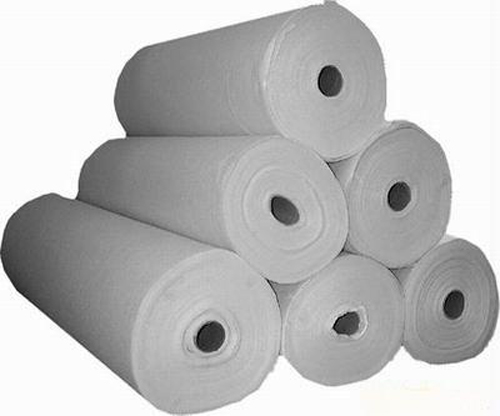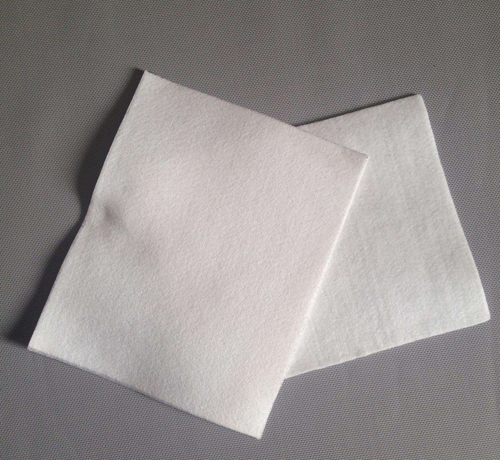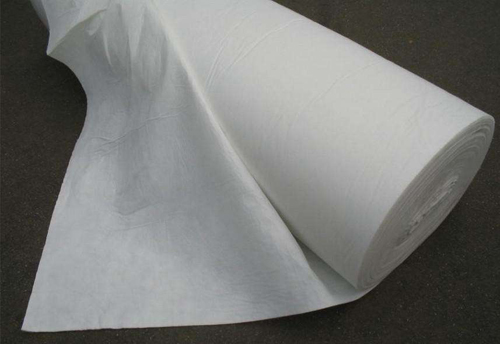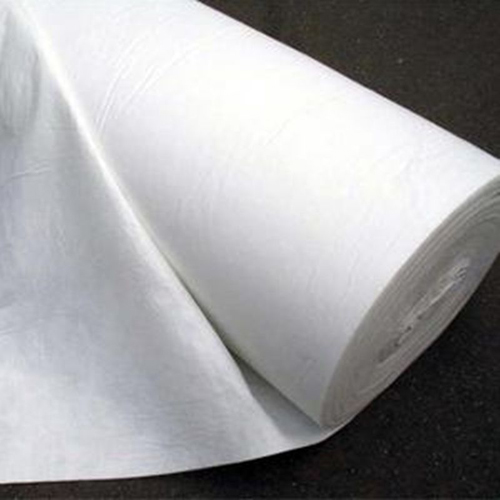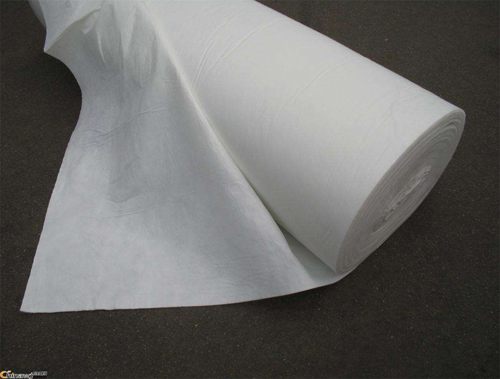
Geotextile concept
The American Society of Agricultural Engineers defines geotextiles as geotextiles or geosynthetics that exist between soil and pipes, stone cages, or retaining walls to enhance water movement and hinder soil movement. The geotextile in the ASTM 4439 standard is defined as a purely permeable geosynthetic material composed of textiles. Used in soil, rock, mud or other geotechnical related materials and as a component of a human-made project. The raw materials used in geotextiles must consider not only the physical and chemical properties required in the environment, but also the cost of the product.
The role of geotextile
(1) Drainage of the foundation of the sports ground based on artificial landfill.
(2) The filter layer around the drainage dark pipe or the gravel drainage dark groove.
(3) Filter layers for water wells, pressure relief wells or diagonal pressure pipes in water conservancy projects.
(4) Reinforcement in backfilling of retaining walls, or panels used to anchor retaining walls.
(5) Reinforce the flexible pavement, repair the cracks on the road, and prevent the pavement from reflecting cracks.
(6) Vertical or horizontal drainage inside the earth dam, buried in the soil to dissipate the water pressure in the gap.
(7) Drainage behind the anti-seepage geomembrane in the earth dam or earth embankment or in the lower part of the concrete facing.
(8) The isolation layer between the roadway and the roadbed, or the isolation layer between the roadbed and the soft foundation.
(9) Segregation of geotextiles between the road, airport, railway turnouts and artificial rockfills and foundations.
(10) Exclude water seepage around the tunnel, reduce the external water pressure on the lining and seepage water around each building.
(11) Increase the stability of gravel slopes and reinforced soil to prevent soil erosion and freezing damage of soil during low temperature.
(12) The filter layer of the initial upstream dam surface of the ash storage dam or tailings dam, and the filter layer of the drainage system in the backfill of the retaining wall.
(13) Roads (including temporary roads), railways, embankments, earth-rock dams, airports, sports fields, etc. are used to strengthen weak foundations.
(14) Isolation, filtration and reinforcement between artificial fill, rockfill or material field and foundation separation, different frozen soil layers.
Geotextile classification
Geotextiles mainly have the following three series:
1. Needle-punched non-woven geotextile, any choice between 100g/m2-600g/m2, the main raw material is made of polyester staple fiber or polypropylene staple fiber, which is made by needle-punching method. The main purposes are: river, sea and lake The slope protection of the dike, the construction of the land, the docks, the locks of the ship locks, etc. are effective ways to maintain soil and water and prevent flooding through back filtration.
2. Acupuncture non-woven fabric and PE film composite geotextile, the specification has a cloth and a film, two cloth and one film, the maximum width of 4.2 meters is the main raw material is to use polyester staple fiber needle-punched non-woven fabric, PE film through composite The main purpose is anti-seepage, suitable for railways, highways, tunnels, subways, airports and other projects.
3. Non-woven and woven composite geotextile, the variety of non-woven and polypropylene filament woven composite, non-woven and plastic woven composite, suitable for basic reinforcement, adjustment of the permeability of the basic engineering facilities.
Features: light weight, low cost, corrosion resistance, with excellent performance such as filtration, drainage, isolation and reinforcement.
Uses: Widely used in geotechnical engineering such as water conservancy, electric power, mine, road and railway:
1, the filter material separated by soil layer;
2. Drainage materials for reservoirs and mines, and drainage materials for foundations of high-rise buildings;
3. Anti-scouring materials for river dams and slope protection;
Geotextile features
1. High strength, due to the use of plastic fiber, it can maintain sufficient strength and elongation in dry and wet conditions.
2, corrosion resistance, long-term corrosion resistance in soil and water of different pH.
3, good water permeability There are gaps between the fibers, so there is good water permeability.
4, good antimicrobial properties Microbes, insects are not damaged.
5. Convenient construction,
Geotextile construction precautions
Precautions for construction:
(1) Buried type should be used: cover thickness should not be less than 30cm
(2) Renovation anti-seepage system should have: cushion layer, anti-seepage layer, transition layer and protective layer.
(3) The soil should be solid to avoid uneven subsidence, cracks, and turf and roots within the anti-seepage range. A sand or clay having a small particle size is laid as a protective layer on the contact surface with the film.
(4) When laying, the geomembrane should not be pulled too tightly, and the two parts buried in the soil part are corrugated, especially when anchored with rigid materials, there should be a certain amount of expansion and contraction.
(5) During construction, stone blocks should be avoided.
Heavy-duty waterproof geotextile laying process:
1. Storage, transportation and disposal Geotextile geotextile rolls should be protected from damage before installation. The geotextile rolls should be piled up in a place where there is no water accumulation, the height of the pile should not exceed four rolls, and the identification piece of the roll can be seen. Geotextile rolls must be covered with opaque materials to prevent UV aging. . During the storage process, the integrity of the label and the integrity of the data should be maintained. Geotextiles must be protected from damage during transportation, including on-site transportation from material storage to work. Geotextiles that are physically damaged must be repaired. Geotextiles that are severely worn cannot be used. Any geotextile that comes into contact with leaking chemical reagents is not allowed to be used in this project.
2, the laying method of geotextile: 2.1 by manual rolling; the cloth surface should be flat, and the appropriate margin is left. 2.2 The installation of filament or short-staple geotextiles is usually done by lap joints, stitching and welding. The width of the stitching and welding is generally 0.1 m or more, and the overlap width is generally 0.2 M or more. Geotextiles that may be exposed for a long time should be welded or stitched. 2.3 Stitching of Geotextiles All stitching must be carried out continuously (for example, point stitching is not allowed). Geotextiles must overlap a minimum of 150 mm before overlapping. The minimum stitch distance is at least 25 mm from the selvedge (the exposed edge of the material). The seams of the well-stitched geotextiles include the one-line and the chain-locking chain stitching method. The thread used for stitching shall be a resin material with a minimum tension of more than 60 N and a chemical resistance and UV resistance equivalent to or exceeding that of a geotextile. Any "leakage needle" on the sewed geotextile must be re-sewed in the affected area. Corresponding measures must be taken to avoid after installation.
